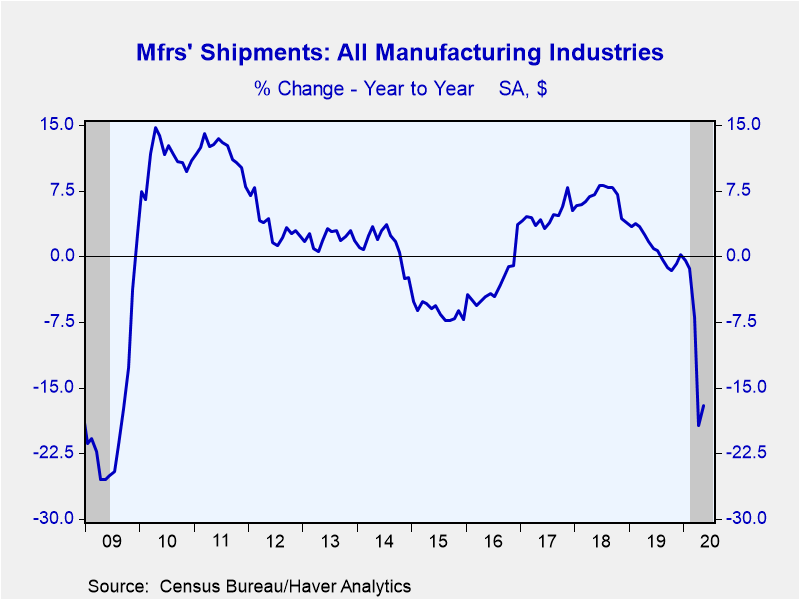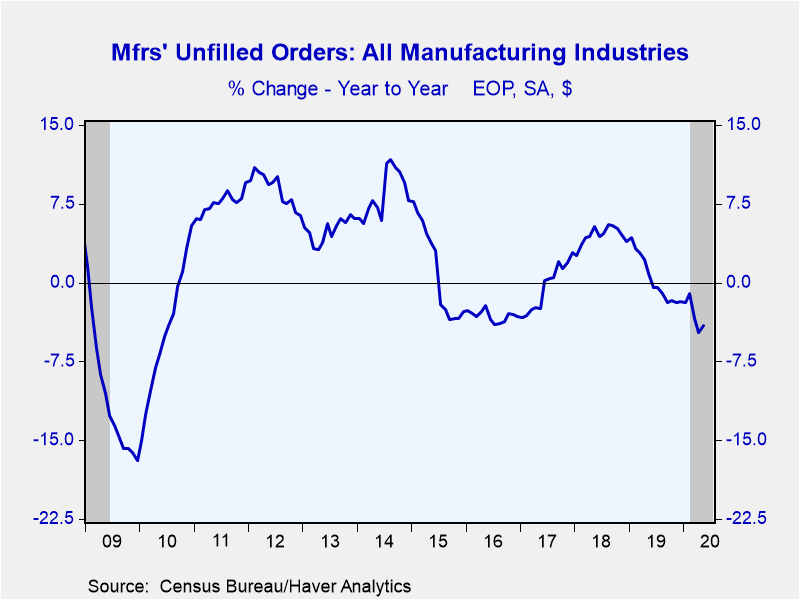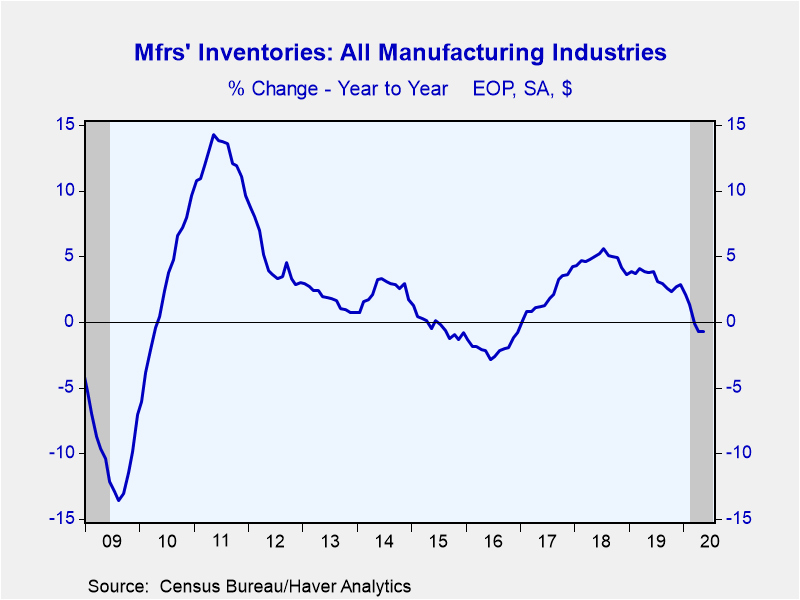 Global| Jul 02 2020
Global| Jul 02 2020U.S. Factory Orders and Shipments Rebounded in May
by:Sandy Batten
|in:Economy in Brief
Summary
• Factory orders rebounded in May, rising 8.0% m/m, after meaningful declines in both March and April. • Strong gains in orders for both durable and nondurable goods in May. • Shipments also rebounded in May, but more modestly. U.S. [...]
• Factory orders rebounded in May, rising 8.0% m/m, after meaningful declines in both March and April.
• Strong gains in orders for both durable and nondurable goods in May.
• Shipments also rebounded in May, but more modestly.
U.S. factory orders and shipments rebounded in May, providing another indication that April will likely be the weakest month for the economy in the recession that began in March. Factory orders rose a larger-than-expected 8.0% m/m (-15.8% y/y) in May following a 13.5% m/m drop in April and an 11.0% m/m decline in March. For the three months ending in May, orders were down 16.8%. The Action Economics Forecast panel had looked for orders to rise 7.2% m/m in May. Orders for both durable and nondurable goods posted gains in May with durable goods orders up 15.7% m/m and nondurable goods orders up 2.0% m/m. Both subgroups had posted meaningful declines in March and April.
While durable goods orders rose in every major category in May, the rebound was led by transportation, which rose 82.0% m/m following declines of 48.9% m/m in April and 43.2% m/m in March. In the three months ending in May, transportation orders are still down 47.2% even after the May rebound, highlighting the base effect problems inherent in calculating monthly percent changes. Orders for nondurable goods, the new information in this report, rose 2.0% m/m in May after having declined in each of the previous four months over which they fell 14.4%.
Shipments rose a more modest 3.1% m/m (-17.0% y/y) in May following declines of 14.0% m/m and 5.5% m/m in April and March, respectively. Shipments of durable goods were up 4.4% m/m while shipments of nondurable goods rose 2.0% m/m. As was the case for orders, shipments of durable goods rose in each major category in May with a 12.4% m/m increase in transportation shipments providing most of the leadership. Shipments of nondurable goods rose in most major categories, led by a 12.1% m/m increase in petroleum shipments which accounted for more than 70% of the rise in shipments of nondurable goods.
Unfilled orders for manufactured products edged up 0.1% m/m (-4.1% y/y) in May after falling 1.6% m/m in April and 2.1% m/m in March. Factory sector inventories rose 0.2% m/m (-0.7% y/y) in May, the first monthly increase in five months. Inventories of durable goods rose 0.1% m/m while inventories of nondurable goods increased 0.3% m/m, their first monthly rise in five months.
The factory sector figures are available in Haver's USECON database. The expectation figure is in the AS1REPNA database.
| Factory Sector (% chg) - NAICS Classification | May | Apr | Mar | May Y/Y | 2019 | 2018 | 2017 |
|---|---|---|---|---|---|---|---|
| New Orders | 8.0 | -13.5 | -11.0 | -15.8 | -0.2 | 6.9 | 5.6 |
| Shipments | 3.1 | -14.0 | -5.5 | -17.0 | 0.9 | 6.7 | 4.4 |
| Unfilled Orders | 0.1 | -1.5 | -2.1 | -4.1 | -1.9 | 3.8 | 2.7 |
| Inventories | 0.2 | -0.5 | -1.1 | -0.7 | 2.8 | 3.7 | 4.3 |
Sandy Batten
AuthorMore in Author Profile »Sandy Batten has more than 30 years of experience analyzing industrial economies and financial markets and a wide range of experience across the financial services sector, government, and academia. Before joining Haver Analytics, Sandy was a Vice President and Senior Economist at Citibank; Senior Credit Market Analyst at CDC Investment Management, Managing Director at Bear Stearns, and Executive Director at JPMorgan. In 2008, Sandy was named the most accurate US forecaster by the National Association for Business Economics. He is a member of the New York Forecasters Club, NABE, and the American Economic Association. Prior to his time in the financial services sector, Sandy was a Research Officer at the Federal Reserve Bank of St. Louis, Senior Staff Economist on the President’s Council of Economic Advisors, Deputy Assistant Secretary for Economic Policy at the US Treasury, and Economist at the International Monetary Fund. Sandy has taught economics at St. Louis University, Denison University, and Muskingun College. He has published numerous peer-reviewed articles in a wide range of academic publications. He has a B.A. in economics from the University of Richmond and a M.A. and Ph.D. in economics from The Ohio State University.










